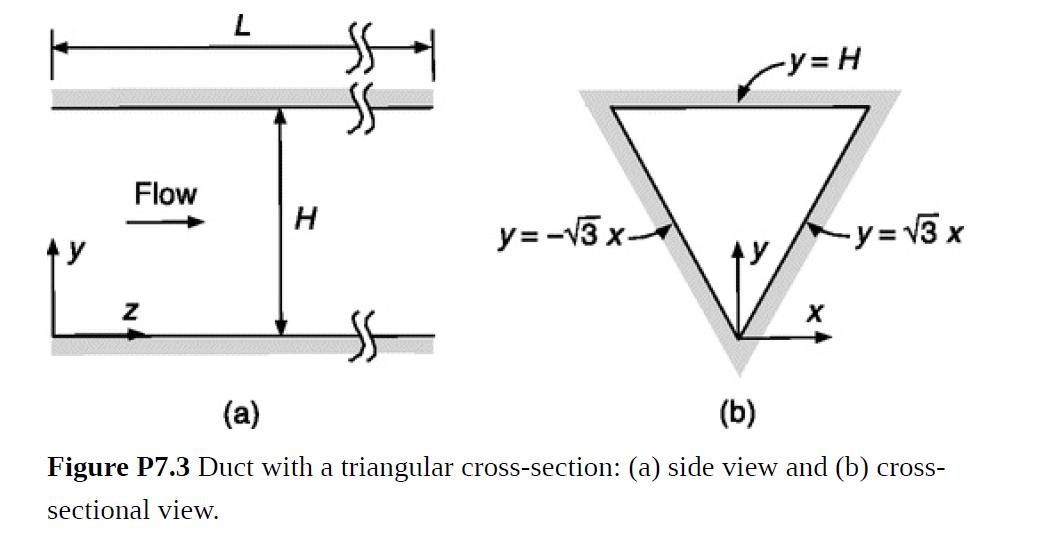An exact solution for the velocity in a conduit is usually obtainable only when each wall is
Question:
An exact solution for the velocity in a conduit is usually obtainable only when each wall is a coordinate surface. An interesting exception is a duct with an equilateral triangular cross-section, as in Fig. P7.3. Adopting the coordinates in Bird et al. (2002, p. 106), the triangle side length is![]()
and the duct length is L. Although the approach described below for finding vz(x, y) seems as if it might be generalized to other polygons, unfortunately it works only for equilateral triangles and parallel plates.
(a) Show that, as suggested in Landau and Lifshitz (1987, p. 54), a solution for the velocity may be constructed as
where A is a constant and hi is the shortest distance of an interior point (x, y) to side i of the triangle. Find the functions hi and then evaluate A in terms of the pressure drop.
(b) Relate the mean velocity U to the pressure drop.
(c) Show that the friction factor is given by fReH = 40/3.
Step by Step Answer:

Introduction To Chemical Engineering Fluid Mechanics
ISBN: 9781107123779
1st Edition
Authors: William M. Deen





